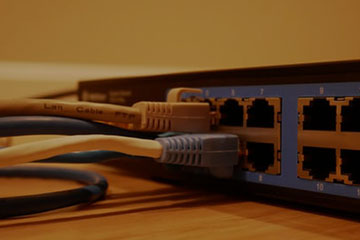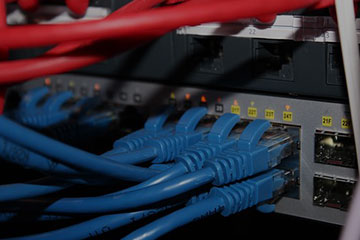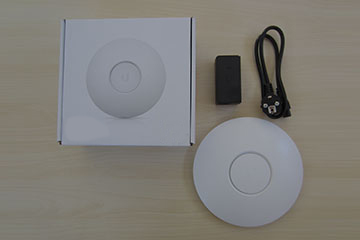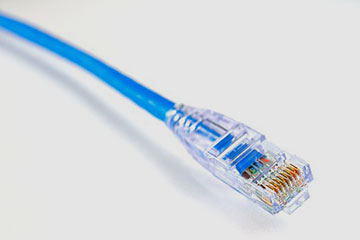Communication solutions for your computers and other devices by connecting them together over a network by using modern information and communications paradigms such as internet, mobile, cloud and high performance computing.

CABINET AND RACK
With the increasing demand for computing and networking power and space in the data center, server cabinet, network cabinet, server rack and network rack are often used to hold networking hardware and assemblies in data center. When you are designing a data center, deciding which server rack & cabinet or network rack & cabinet to deploy should be put at the first place. The right one that meets your installation demand can help you improve power protection, cooling, cable management, and physical security.

NETWORK SWITCH
A network switch is a small hardware device that centralizes communications among multiple connected devices in one local area network (LAN). Stand-alone Ethernet switch devices were commonly used on home networks many years before home broadband routers became popular. Modern home routers integrate Ethernet switches directly into the unit as one of their core functions. High-performance network switches are still widely used in corporate networks and data centers. Network switches are sometimes referred to as switching hubs, bridging hubs or MAC bridges.

ROUTER
Routers are small electronic devices that join multiple computer networks together using either wired or wireless connections. In technical terms, a router is a Layer 3 network gateway device, meaning that it connects two or more networks and that the router operates at the network layer of the OSI model.

PATCH PANEL
A patch panel is an interconnecting device through which horizontal cabling runs can be connected to other networking devices, such as hubs and repeaters. More specifically, a patch panel is a gathering of pin locations and ports. A patch panel acts as a switchboard, where horizontal cables coming from workstations, can connect to other workstations to form a LAN. In some instances, a patch panel can also provide locations for devices to connect to a WAN, or to the Internet. This connection is described by TIA/EIA-568-A as a horizontal cross-connect (HCC).

WIRELESS ACCESS POINT
Wireless access points (APs or WAPs) are networking devices that allow Wi-Fi devices to connect to a wired network. They form wireless local-area networks (WLANs). An access point acts as a central transmitter and receiver of wireless radio signals. Mainstream wireless APs support Wi-Fi and are used in homes, public internet hotspots, and business networks to accommodate wireless mobile devices. The access point can be incorporated into the wired router or stand-alone router.

STRUCTURED CABLING
Structured Cabling is the lifeline for the entire Information Technology network. It is the foundation on which all business functions depend. A properly designed, installed and administered cabling system reduces costs through each phase of its life cycle; installation; moves; add-ons and changes; maintenance and administration. The importance of cabling should be neither overlooked nor underestimated. A structured cabling system provides a platform upon which an overall information system strategy is built. Structured cabling systems support multiple voice, data, video, building automation and multimedia systems.

FIBER OPTICS
A fiber optic cable is a network cable that contains strands of glass fibers inside an insulated casing. They're designed for long distance, high-performance data networking and telecommunications. Compared to wired cables, fiber optic cables provide higher bandwidth and can transmit data over longer distances. Fiber optic cables support much of the world's internet, cable television, and telephone systems.

BRIDGING NETWORK
A network bridge joins two separate computer networks. The network bridge enables communication between the two networks and provides a way for them to work as a single network. Bridges extend local area networks to cover a larger physical area than the LAN can reach. Bridges are similar to — but more intelligent than — simple repeaters, which also extend signal range.

CAT 6 CABLE
Category 6 is an Ethernet cable standard defined by the Electronic Industries Association and Telecommunications Industry Association. Cat 6 is the sixth generation of twisted pair Ethernet cabling that is used in home and business networks. Cat 6 cabling is backward compatible with the Cat 5 and Cat 5e standards that preceded it.

SERVER
A server is a computer designed to process requests and deliver data to another computer over the internet or a local network. The word server is understood by most to mean a web server where web pages can be accessed over the internet through a client like a web browser. However, there are several types of servers, including local ones like file servers that store data within an intranet network. Although any computer running the necessary software can function as a server, the most typical use of the word references the enormous, high-powered machines that function as the pumps pushing and pulling data from the internet. Most computer networks support one or more servers that handle specialized tasks. As a rule, the larger the network in terms of clients that connect to it or the amount of data that it moves, the more likely it is that several servers play a role, each dedicated to a specific purpose. Strictly speaking, the server is the software that handles a specific task. However, the powerful hardware that supports this software is also usually called a server because server software coordinating a network of hundreds or thousands of clients requires hardware much more robust than what you'd buy for ordinary consumer use.

FIREWALL
A network firewall protects a computer network from unauthorised access. It might take the form of a hardware device, a software program, or a combination of the two.Network firewalls guard an internal computer network against malicious access from the outside, such as malware-infested websites or vulnerable open network ports. You can find network firewalls in homes, schools, businesses, and intranets. A network firewall also can be configured to limit the access of internal users to outside connections, as in the case of parental controls or workplace locks. Both of these features commonly prevent access to gambling and adult websites, among many other content types.

VOIP Telephony
VOIP (Voice over Internet Protocol) is a great technology that allows you to make free and cheap calls locally and worldwide and gives you a handful of other benefits and improvements over traditional telephony. To be able to use VoIP, you need a VoIP service. VoIP service is the service that you get from a company (called a VoIP service provider) that allows making and receiving VoIP calls. It is like the Internet service you get from an Internet service provider or the phone service you get from a PSTN line telecom. You, therefore, need to be registered with a VoIP service provider and use its service to make VoIP calls. For example, you need to register with Skype, which is the most popular VoIP service on the Internet, and use your Skype account to make VoIP calls to people online and on their phones.

Network Video Recorder (NVR)
If you have IP cameras, you’ll want a NVR. These recording devices use the local network to send and receive data, and are ideal for remotely monitoring your surveillance system from your computer, smart phone, or tablet. Because IP cameras are the cutting edge of surveillance technology, including a NVR in your system allows you to include new cameras with more advanced features.

PC and other devices Repairing and Troubleshooting
Identifying, troubleshooting and resolving problems and issues in a faulty computer. Hardware fault i.e. the physical review of a computer and testing for abnormalities. Suspected components, such as random access memory (RAM), hard disk, mother board, power supply or optical drive are individually checked, troubleshooted or replaced if an error is detected.
Software-based computer repair issues are generally related to operating system (OS) configuration or updates, installed applications, viruses and other software services. Similarly, computer repair for network/Internet issues allow a computer to completely utilize available and network services.
We also provide repairing and troubleshooting solutions for other devices such as printers, scanners, UPS, security cameras, speakers, monitors and other displays, batteries etc.

PC installations
We provide installations and setup of new PCs that include OS and software installations along with printers, speakers, scanners anti-virus etc.
Authorized Tie-Ups






























